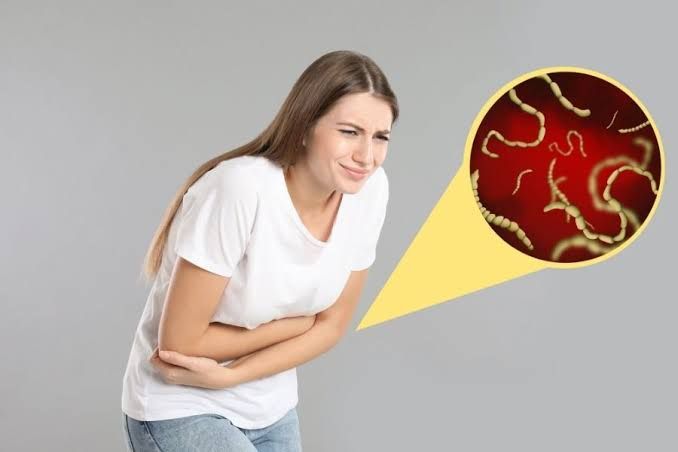
Clinically Important Parasites that Infest Humans
Clinically important parasites that infest humans include:
- Nematodes (roundworms)
- Ascaris lumbricoides (giant roundworm)
- Enterobius vermicularis (pinworm)
- Strongyloides stercoralis (threadworm)
- Ancylostoma duodenale and Necator americanus (hookworms)
- Trichuris trichiura (whipworm)
- Cestodes (tapeworms)
- Taenia saginata (beef tapeworm)
- Taenia solium (pork tapeworm)
- Echinococcus granulosus (dog tapeworm)
- Trematodes (flukes)
- Schistosoma species (blood flukes)
- Fasciola hepatica (liver fluke)
Mode of Transmission and Pathogenesis of Diseases Caused by Worm Infestations
Mode of Transmission:
- Ascaris lumbricoides:
- Transmission occurs through ingestion of eggs from contaminated soil, food, or water.
- Enterobius vermicularis:
- Spread via the fecal-oral route, often through contaminated hands or surfaces.
- Strongyloides stercoralis:
- Infection occurs through skin penetration by larvae in contaminated soil.
- Ancylostoma duodenale and Necator americanus:
- Larvae penetrate the skin, typically through bare feet, leading to infection.
- Trichuris trichiura:
- Similar to Ascaris, transmission is via ingestion of eggs from contaminated sources.
- Taenia saginata and Taenia solium:
- Infection occurs through consumption of undercooked beef or pork containing cysticerci.
- Echinococcus granulosus:
- Humans become infected by ingesting eggs shed in the feces of infected dogs.
- Schistosoma species:
- Transmission occurs when cercariae penetrate the skin during contact with contaminated freshwater.
- Fasciola hepatica:
- Infection results from ingesting metacercariae present on aquatic plants or in contaminated water.
Pathogenesis:
- The pathogenesis of worm infestations varies based on the type of parasite:
- Ascaris lumbricoides: Can cause malnutrition, intestinal obstruction, and respiratory symptoms due to migration.
- Enterobius vermicularis: Primarily causes anal itching and secondary bacterial infections.
- Strongyloides stercoralis: Can lead to gastrointestinal symptoms and severe complications in immunocompromised individuals.
- Hookworms: Cause iron deficiency anemia due to blood loss at attachment sites in the intestines.
- Trichuris trichiura: Associated with diarrhea and rectal prolapse in heavy infections.
- Taenia species: Generally asymptomatic but can cause digestive issues; T. solium can lead to neurocysticercosis if larvae invade the central nervous system.
- Echinococcus granulosus: Causes hydatid disease with cyst formation in various organs, leading to complications depending on cyst location.
- Schistosoma species: Can result in schistosomiasis, characterized by abdominal pain, diarrhea, and liver damage due to egg deposition.
- Fasciola hepatica: Causes fascioliasis with symptoms related to liver damage and bile duct obstruction.
Laboratory Diagnostic Tests Relevant to Worm Infestations
Laboratory diagnostic tests for worm infestations include:
- Stool Examination:
- Microscopic examination for eggs or larvae is standard for diagnosing nematode and cestode infections.
- Serology:
- Blood tests can detect antibodies against certain parasites like Echinococcus granulosus or Strongyloides stercoralis.
- Endoscopy/Colonoscopy:
- Direct visualization may be used for diagnosing certain infections like Strongyloides or detecting adult worms.
- Imaging Studies:
- Ultrasound or CT scans can help identify cysts associated with Echinococcus or complications from other helminths.
- PCR Testing:
- Molecular techniques are increasingly used for specific identification of parasites from stool samples or tissues.
- Skin Snips/Biopsy:
- For certain infections like Strongyloides stercoralis, skin snips may be taken to identify larvae directly.
In summary, understanding these clinically important parasites involves recognizing their modes of transmission, pathogenesis related to diseases they cause, and appropriate laboratory diagnostic methods for effective identification and treatment strategies.







